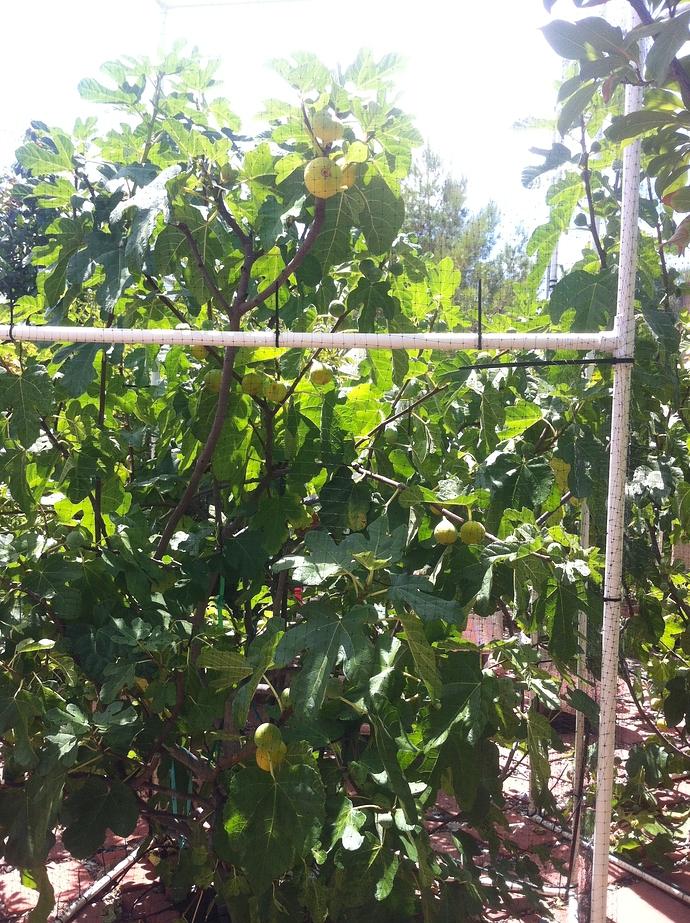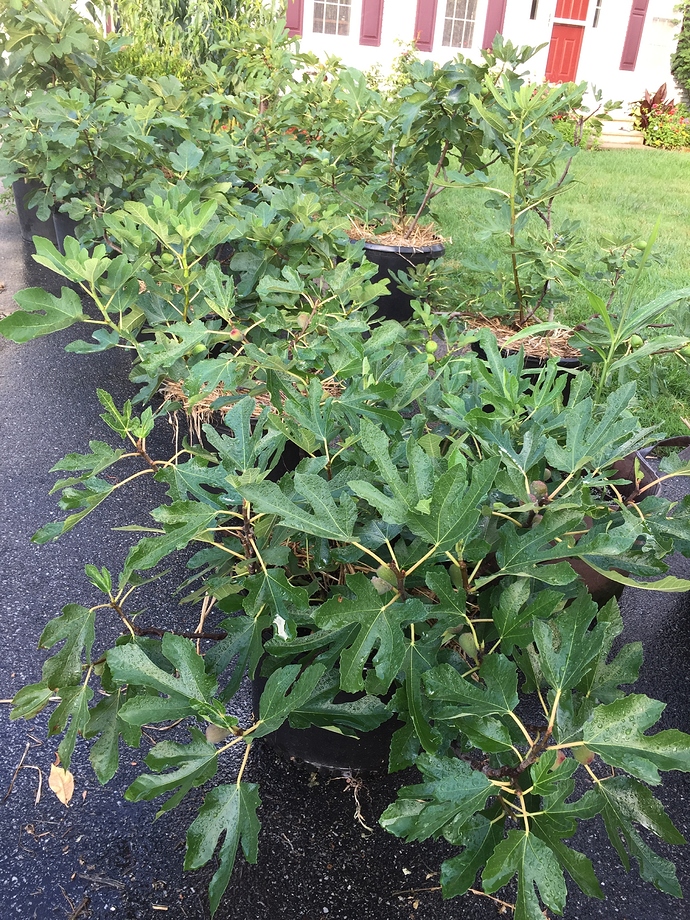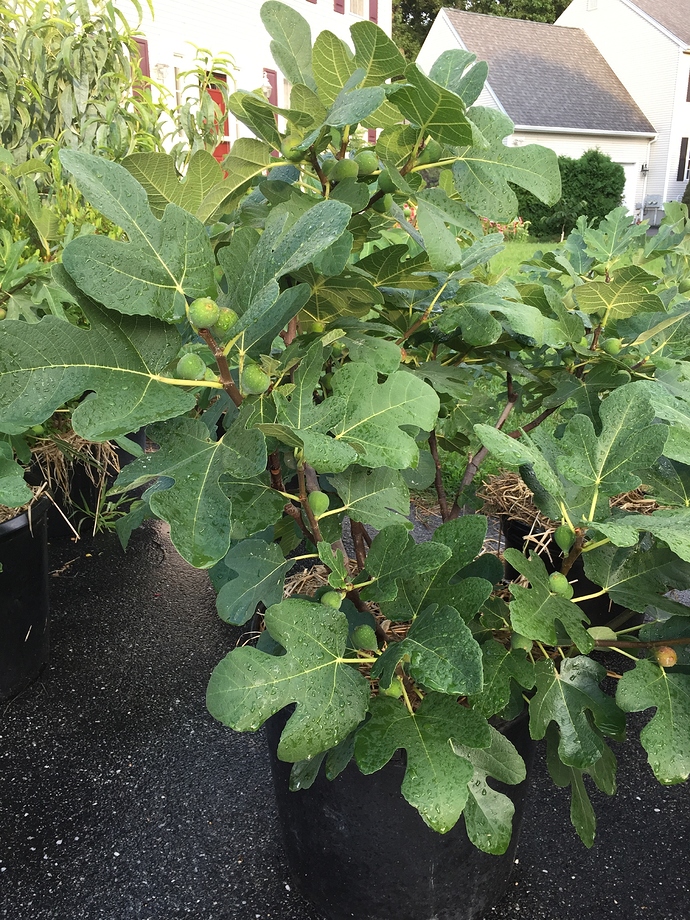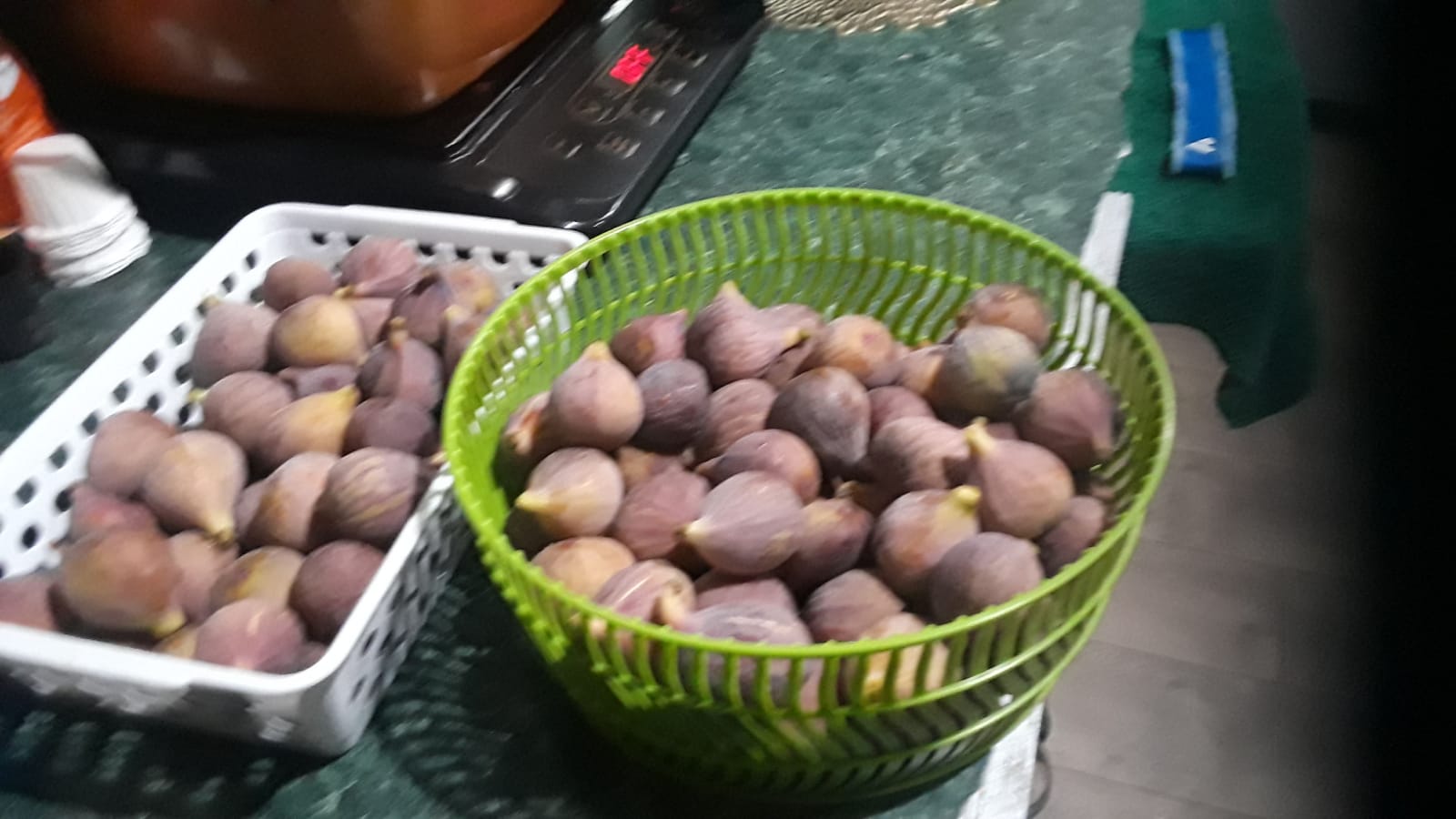@Ruben -
A google search turned up “Garnsey White Seedless” in this seller’s web pages. I believe you’ll need to contact them for more information.
I agreed that all your figs are too tall. I tips pinched all of mine and they are around 2-4 feet tall and bush form.
Tony

I pinched off the tops already but they seem to be happy on the deck so they grow like crazy.
I bought them a long time ago from Amstrong Garden Center near my place in Los Angeles. I don’t think they have it anymore. At my place fig cuttings dry up very quick so maybe I will try air layering later when it is cooler. The figs is big, juicy and very sweet but the skin is very thin when it is ripe so it doesn’t keep well unless dried or frozen. It is a big problem when so many ripen at the same time. The enclosure is only 5’x5’x10’ so I have to trim off a lot of branches all the time.
The tree in the enclosure on the right is also a Garnsey fig.
@Courtney,
How big are your pots?
Mine are in either 5, 10 or 15 gal pots. They are mostly 2-3 ft tall. Hardy Chicago is one of the oldest 4-5 years old and the tallest, closer to 4 ft.
Just a simple black mission fig. I planted it over 20 years ago in DC. It suffered two polar vortex and died to the ground once.
You can try direct rooting of the cuttings. Last year the cutting that did the best was the extra cutting I stuck in a pot with a cherry tomato plant. It was watered regularly in direct sunlight. When I noticed that it had rooted, I pulled the tomato plant and let the fig go. This year it has over 2 dozen figs on it.
I’ve heard good reports about direct rooting - people in less hospitable climates than Cali will root in the winter to get a head start on the next winter, here we do not need to worry about that as much. I have 2 pots with half a dozen cuttings each on a drip irrigation system. I’ll have to see how they do.
All different sizes. They were bushy before I traveled out of states for 2 weeks (no care, no water) in early July. Most of the leaves on the bottom dried up and died. So, now that they have recovered, there are more leaves on top. I pinched off tops, but they keep growing sideways…so I just stop pinching now. The season is almost over now…plus, I threw out my back so no more climbing for me.
Richard, u have eagle eyes! I think it’s the red colored ones (whites inside). It has not fruited yet, partly due to neglect by me. Hopefully, next year.
Fruits on pods 1 or more years old. Also needs adequate root system.
That’s my next project when I feel better (hopefully before the year ends). I need to thin them first.
Thanks @anon18642480 that would be great! Your trees look nice and healthy and the bigs just fabulous. That would be great but If I’m not wrong right now is the prime time for airlayers.
Sorry for the typo the “Figs”
Some of the leaves on those seedlings look like they have fig bud mite damage… Could be thrips or aphids, but you would probably would have noticed them. And the lower eaves don’t show any symptoms, which can be another characteristic of fig bud mite damage, their life cycle is controlled by temperature so population peaks during summer. They transmit and intensify FMV and other viruses, and in great enough numbers can arrest growth and cause leaf drop. Most grossly, they inhabit the insides of figs, causing bronzing as shown here.
They are very tough to actually see due to their tiny size (at least 30x microscope required) and habit of infesting new leaves which have dense trichomes they can hide in. Hard to eradicate as well, because contact sprays only provide limited control. Miticides with translaminar properties and residual action such as forbid 4f work the best.
I understand you probably don’t want to spray all of your trees because it is so close to harvest time, but they probably all have the mites at this point (detecting anything less than an infestation is like finding a needle in a haystack)I had the same dilemma some years back… Forbid 4f is a selective new generation miticide that is available in small quantities on eBay (the rate is .6 to 1.2 ml. per gallon so a little goes a long way), it is not labelled for bearing fruit trees, but the same active ingredient (spiromesifen) is labelled under the name Oberon, which has a pre harvest interval of 3 days for strawberries.
If you don’t feel comfortable using forbid so close to harvest, spinosad should at least provide good control because it is translaminar and should prevent the spread of FMV (don’t see any on your trees actually) and fruit damage, but needs to be reapplied regularly because it does not provide residual control and their life cycle is only about a week to ten days in hot weather if I remember correctly, so eggs that hatch will quickly cause a reinfestation.
Hope you recover fully soon.
Back pain seems to follow gardeners. Pulling lot of weeds this weekend did a number on my back, too.
Ty!






